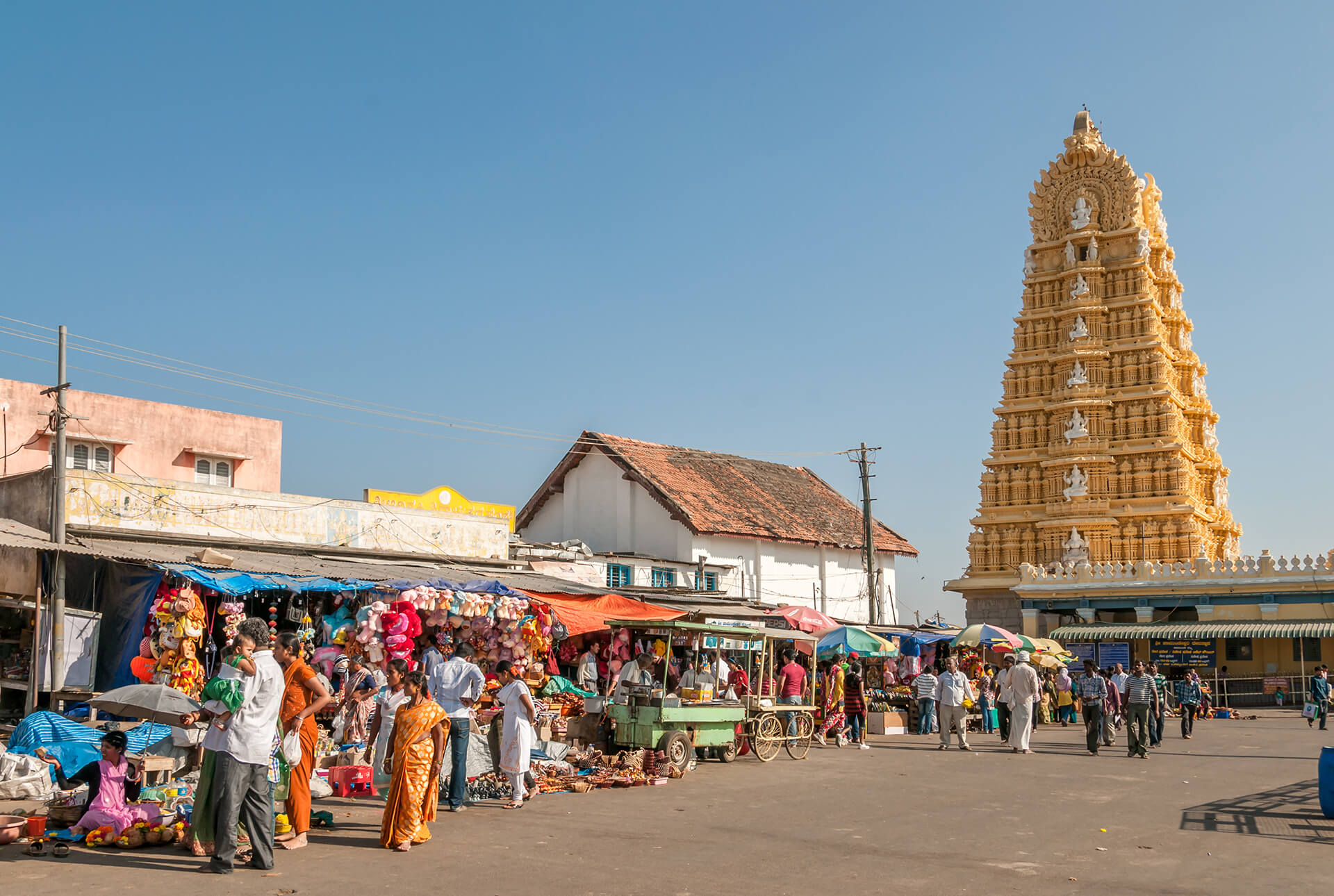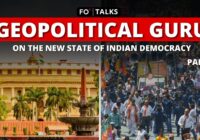With the dust of the election finally settled, the new king has been anointed. Siddaramaiah, a senior leader of the Indian National Congress (INC), became the chief minister of Karnataka once again on May 20. He had previously served in the office from 2013 to 2018.
D. K. Shivakumar has begrudgingly taken the second post of the deputy chief minister. It remains to be seen if he will continue to stand on the sideline, as history tells us that chief ministers usually have a hard time completing their terms in this state. In the 66 years of its modern political history, Karnataka has seen only four instances of chief ministers completing their terms. The last one, though, was Siddaramaiah himself.
A brief history
The roots of this anomaly lie in the 20th-century unification movement that led to the formation of the state. This movement aimed to bring together various regions, uniting the territory of the former Mysore Kingdom with parts of Hyderabad and Bombay states, along with the districts of Ballari, Dakshina Kannada and Kodagu. These regions shared a common language, Kannada.
Despite the unification of the state into a single administrative entity, politics in Karnataka remained highly regionalized. This resulted in a system with a weak state capital. Regional strongmen held considerable sway over policy, often demanding plum posts for their supporters. Winning in Karnataka means effectively winning six different elections, each with its own unique characteristics. To have a chance at forming a government without a coalition, a political party must perform exceptionally well in at least three regions and achieve above-average results in at least two others.
In Karnataka’s 66 years of existence, the INC has been the dominant political force, governing the state for approximately 50 years. As in any other Indian election, caste plays a crucial role in determining electoral outcomes. Before the unification of Karnataka, the Vokkaligas, a landholding community, held considerable sway within the INC party of Mysore state. Concerned about potentially relinquishing power to the numerically superior Lingayats, a dominant Shaivite caste in the northern regions that were to be added to the state, several Vokkaliga leaders voiced their opposition to the unification of Kannada speakers. Vokkaliga fears were not unfounded. After unification, Lingayats swiftly captured power within the INC and also took the coveted post of the chief minister. They continued to dominate the INC until the late 1980s.
The turning point came when Prime Minister Rajeev Gandhi unceremoniously dismissed Chief Minister Veerendra Patil in a press conference over his handling of a communal riot. This 1990 “humiliation” of a son of the soil by a national leader prompted the entire Lingayat community to align itself with the then-nascent Bharatiya Janata Party (BJP) under B. S. Yediyurappa, a loyalty that has endured ever since.
Meanwhile, the capture of the INC by the Lingayat community had created the need for a strong Vokkaliga leader who could unite them into a formidable force. H. D. Devegowda and his party Janata Dal (JD), quickly filled this void. The JD rose rapidly thanks to the support of the Vokkaliga community. This resurgence led to the Vokkaligas reclaiming the post of chief minister after nearly four decades, and, to their delight, even the post of prime minister, albeit for only a year from 1996–1997. In 1999, the party split and Devegowda’s faction became the Janata Dal (Secular), or JD(S).
Twenty years ago, H. D. Kumaraswamy, the son of Devegowda, took over the reins from his father. Since entering politics in 2003, Kumaraswamy has served as chief minister twice.
With these two dominant castes fighting for power, a third alternative emerged in the form of “Ahinda”—an alliance between religious minorities, backward castes and Dalits. The alliance masterminded by former chief minister Devraj Urs has found its torchbearer in Siddaramaiah today. These are the three corners of the triangular fight that has dominated Karnataka politics for the past three decades.
The Lingayat blunder
The previous assembly elections in 2018 had returned a hung assembly, with the BJP as the single largest party. However, the INC and JD(S) managed to stitch together an alliance with H. D. Kumaraswamy as chief minister.
A year into the government, discontent grew and 12 legislators belonging to both coalition partners defected to the BJP and formed a government with Yediyurappa at the helm. He was a leader of great stature, with a massive following in the state. Since 1990, this Lingayat leader had toiled to build up the BJP in Karnataka, the party’s only home in the South. However, Yediyurappa’s independent style of working often clashed with the ever-centralizing impulse of BJP high command.
When the conflict between the state and national parties reached a deadlock, Yediyurappa resigned after Home Minister Amit Shah and the central BJP leadership used a clause in the BJP charter that mandated compulsory retirement at 75 to force the senior statesman out of office. Cognizant that the sentiments of Yediyurappa’s community would be hurt, the BJP tried to placate it by appointing Basavraj Bommai, another Lingayat, as the chief minister for the remainder of the term. But the damage was done. Bommai was a political lightweight who could never fit into Yediyurappa’s shoes.
Adding insult to injury, the BJP also decided to endorse the former chief minister and Lingayat leader Jagadish Shettar, a six-time elected member of Karnataka’s legislative assembly, and the former deputy chief minister Laxman Savadi a month before the elections. Unfortunately for the BJP, both leaders left the party and joined the INC, claiming that the BJP was anti-Lingayat. Their supporters followed en masse, further adding credibility to their claims that “BJP is anti-Lingayat.” Even though Shettar lost in the polls, his joining the INC worked in the party’s favor. It swept the Hyderabad and Mumbai Karnataka regions with a majority of Lingayat votes.
Hindutva vs. Kannada pride
After the leadership change, the BJP thought it could offset potential losses on Lingayat votes by building a pan-religious identity of Hindutva. The party focused on national Hindu identity to win support. While the monsoon ravaged the infrastructure of the state capital Bengaluru, the Karnataka government busied itself making a fuss about hijabs in schools and the boycott of halal products. This aggressive push was spearheaded by C. T. Ravi, a rising star in the state party. However, this imported northern version of Hindutva failed to resonate with the people of Karnataka. While Hindutva politics can be seen as an acceptable side dish, it cannot serve as the main course in Karnataka. Unsurprisingly, Ravi lost his seat, and the BJP drew a blank in his district, Chikmagalur.
Hindutva has a natural tendency to homogenize people under a broad blanket of Hinduism and Hindi. In South India, language forms a fundamental part of identity and Hindi is still resented as an imposition by North Indian leaders. In Karnataka, the BJP was seen as neglecting the interests of the Kannada language and cozying up to New Delhi’s edicts, heightening concerns about the erosion of local autonomy. Moreover, the non-payment of goods and services taxes owed to the state and the promotion of Gujarat’s Amul dairy cooperative over the local Nandini brand contributed to this narrative of the neglect of Karnataka.
Administrative Failure
Furthermore, the BJP had many failures on the administrative front. The Karnataka State Contractors Association (KSCA) alleged that ministers were demanding illegal cuts as high as 40% of the project budget, making it unfeasible for KSCA members to operate. The INC, under the guidance of their consultant Sunil Kanugolu, who worked formerly for McKinsey & Company, latched on to this and launched a campaign: “40% Sarkara” (40% Government). The campaign prominently featured posters with the phrase “Pay CM,” cleverly playing a pun on India’s popular payment network “Paytm,” with an accompanying QR code to “pay bribes.” Kanugolu’s campaign was a hit on social media, tilting the narrative battle towards the INC.
The BJP faced the polls with a sinking ship and an unreliable captain. The best they were hoping for was a hung assembly. When the results were out, they could only hold on to their bastions in the capital Bengaluru and in coastal Karnataka. As many as 11 ministers lost their seats and the party drew a blank in eight districts. Their only silver lining was the BJP vote share remained unchanged at ~36%.
Meanwhile, the INC increased its vote share by a decisive ~5%, going up from 38% to 43%. This came at the cost of Kumaraswamy’s JD(S) whose vote share fell from 18.3% to 13.3%. The INC’s remarkable victory in the Old Mysore region can be attributed to Vokkaligas uniting behind the state INC chief Shivakumar who is now the second-in-command. He missed out on the chief ministerial positions because Jawaharlal Nehru’s great-grandson Rahul Gandhi favored Siddaramaiah once again. This overlooking of Shivakumar might have consequences. It remains to be seen if Vokkaliga support for the INC will extend to the crucial upcoming national elections next year.
What Next?
The 2023 Karnataka election victory was a hard-fought one for the INC. They needed the organizational skills of Shivakumar as well as the personal charisma of Siddaramaiah to win. The two leaders realized that they depended on each other. Hence, they buried their differences and fought the elections unitedly. Now that victory is theirs, their rivalry is back and the gloves are off. Therefore, we have good reason to believe that the government’s reign might not be frictionless.
Gandhi is banking on the Shivakumar-Siddaramaiah duo to deliver a major chunk of seats in the all-important national elections next May. In the 2019 national elections, the Congress managed to win only one out of the 28 seats in Karnataka. However, 2024 might turn out differently. The BJP has been completely decimated in Karnataka and is in soul-searching mode. The state BJP lacks a strong leader who can deliver the only potential set of seats in South India to Prime Minister Narendra Modi.
Yet it is important to remember that the people of Karnataka possess a commendable level of political maturity. In the past, they have often made distinctions between state and national issues, voting for different parties in state and national elections. Time will tell if the Congress can successfully capitalize on its 2023 victory or whether the BJP will make a comeback.
[Anton Schauble edited this piece.]
The views expressed in this article are the author’s own and do not necessarily reflect Fair Observer’s editorial policy.
Support Fair Observer
We rely on your support for our independence, diversity and quality.
For more than 10 years, Fair Observer has been free, fair and independent. No billionaire owns us, no advertisers control us. We are a reader-supported nonprofit. Unlike many other publications, we keep our content free for readers regardless of where they live or whether they can afford to pay. We have no paywalls and no ads.
In the post-truth era of fake news, echo chambers and filter bubbles, we publish a plurality of perspectives from around the world. Anyone can publish with us, but everyone goes through a rigorous editorial process. So, you get fact-checked, well-reasoned content instead of noise.
We publish 2,500+ voices from 90+ countries. We also conduct education and training programs
on subjects ranging from digital media and journalism to writing and critical thinking. This
doesn’t come cheap. Servers, editors, trainers and web developers cost
money.
Please consider supporting us on a regular basis as a recurring donor or a
sustaining member.
Will you support FO’s journalism?
We rely on your support for our independence, diversity and quality.







Comment